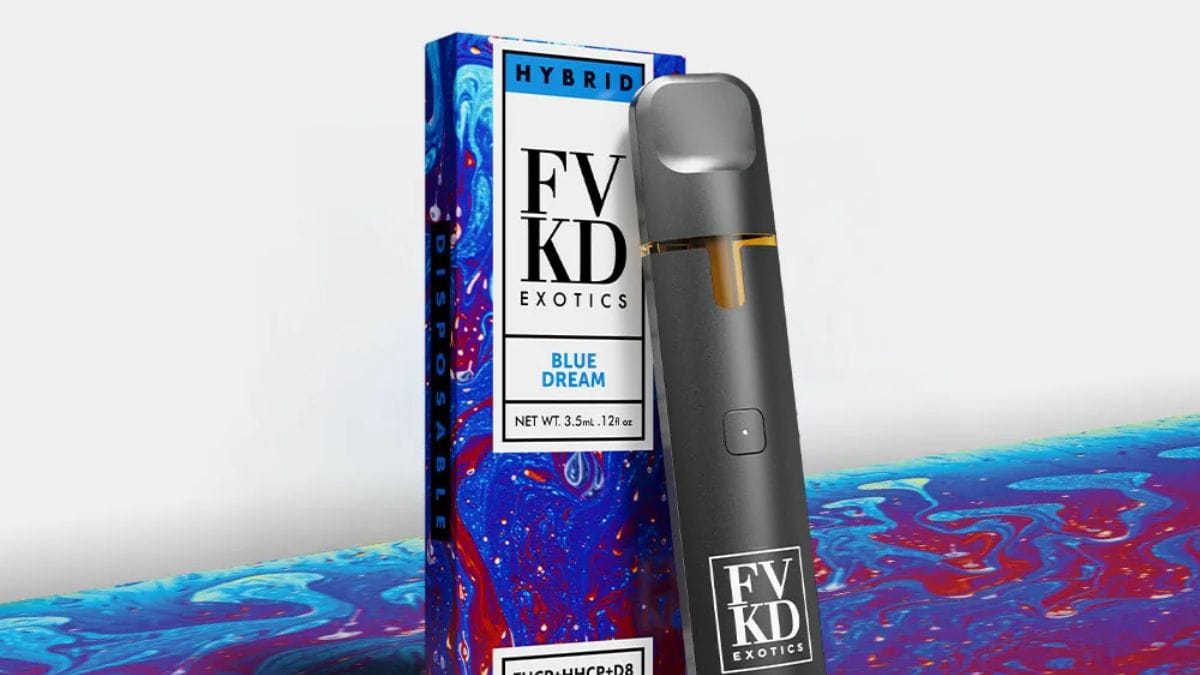THC has long been known as the main cannabinoid responsible for producing uplifting and euphoric effects. However, a new compound THCP has recently gained attention for its unusually potent impact on the body. Although it shares similarities with THC, its molecular structure leads to significantly higher receptor activity, creating more intense effects even at small doses.
As THCP becomes more widely recognized, understanding the science behind it helps consumers make informed and responsible choices. Let us get our heads wrapped around understanding what THCP is, why it behaves differently, and what researchers have discovered about its unique interaction with the human body.
What Exactly is THCP?
THCP, short for Tetrahydrocannabiphorol, is a naturally occurring cannabinoid found in very small concentrations in cannabis plants. It was first identified by Italian researchers in 2019, who discovered that THCP binds far more strongly to the body’s cannabinoid receptors than traditional THC.
While THC is well-studied, THCP is newer and still undergoing extensive scientific exploration, especially concerning potency, safety, and long-term impact.
Why is THCP Considered More Potent Than THC?
The key difference lies in the length of the alkyl side chain—a part of the molecule that determines how well cannabinoids bind to CB1 receptors in the brain.
| Cannabinoid | Side Chain Length | Binding Strength | Typical Effect Level |
| THC | 5 carbons | Strong | Moderate to strong |
| THCP | 7 carbons | Extremely strong | Very strong, even in small amounts |
THCP’s longer 7-carbon chain allows it to attach to receptors up to 30 times more strongly in lab studies. This doesn’t necessarily mean 30× stronger effects, but it does mean the body responds much more intensely per milligram. THCP activates receptors more strongly; many users report differences such as:
- Enhanced sense of calm or euphoria
- Sharper body awareness
- More noticeable mood elevation
- Stronger physical relaxation
How THCP Products Can Vary Across Different Formulations
THCP is not limited to a single format. It can be combined with various other cannabinoids to create different effect profiles. These combinations influence how strong the experience feels, how long it lasts, and whether it feels more relaxing or uplifting.
Common cannabinoids like THCP can be blended with:
- Delta-8
- Delta-9
- HHC
- CBD
- CBN
Each blend interacts uniquely with your endocannabinoid system, and consumers often read product information on the FVKD website to understand potency levels or format types before choosing a device or extract.
Some users also turn to other extract styles, including concentrates like FVKD live rosin — to understand how THCP’s potency translates in different consumable forms.
How Does THCP Interact With the Human Body?
Cannabinoids affect the body through the endocannabinoid system (ECS), a network that regulates mood, sleep, stress, appetite, and more. THCP interacts with:
CB1 Receptors (Brain & Nervous System)
Responsible for euphoria, bliss, relaxation, and altered perception.
CB2 Receptors (Immune System)
Influences inflammation, body balance, and physical comfort.
Because THCP binds more efficiently, it may:
- Produce quicker onset of effects
- Trigger deeper relaxation or bliss
- Enhance sensory perception
- Extend the duration of effects
- Increase the intensity of physical sensations
These effects largely depend on tolerance, metabolism, and dosage. THCP is still being studied, so safety data is evolving. Early findings suggest:
- Lower doses are generally recommended due to higher receptor activity
- Stronger effects may not be ideal for beginners
- Mild side effects may be more noticeable
THC vs THCP: A Simple Comparison
| Feature | THC | THCP |
| Potency | Moderate | Much stronger per mg |
| Receptor Binding | High | Very high |
| Research Status | Extensive | Emerging |
| Recommended For | Standard use | Experienced users |
| Onset | Predictable | Possibly faster |
| Duration | Varies | Potentially longer |
Tips for Responsible THCP Use
- Start Low: Potency varies widely; always begin with a very small dose.
- Understand Your Tolerance: If you’re new to strong cannabinoids, regular THC tolerance may not apply.
- Read Product Specs Carefully: Details such as battery type, cannabinoid percentages, and extraction format matter—especially in strong blends like FVKD Exotics vape.
- Avoid Mixing With Alcohol: Both can amplify sedation.
- Check Local Regulations: THCP legality still varies by region.
In Short,
THCP is a fascinating breakthrough in cannabinoid science. Its unique molecular structure creates stronger receptor interaction, leading to more noticeable effects than traditional THC. While research is still in development, early findings highlight why the compound has garnered attention among experienced users. Understanding how THCP works helps consumers make informed, safe, and educated decisions—especially as new products and formulations.


